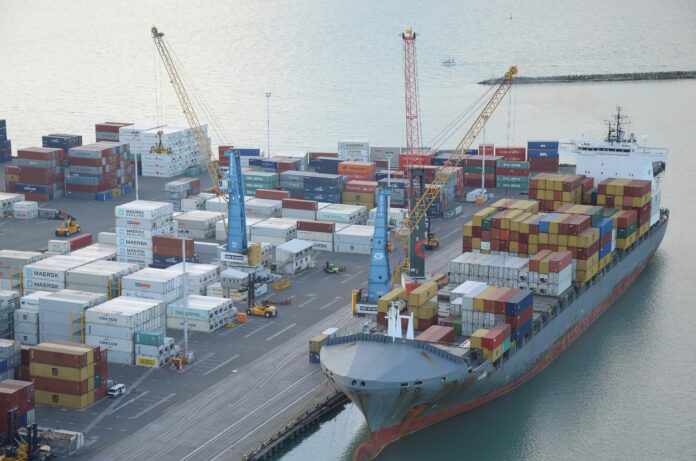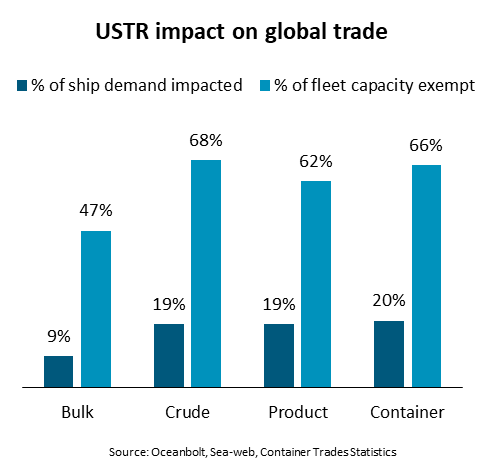
When new fees from the U.S. Trade Representative (USTR) targeting Chinese dominance in the maritime sector take effect on 14 October, about 35% of ships in the combined bulk, crude tanker, product tanker, and container fleet could face additional port charges when calling at U.S. ports.
“These ships represent 44% of total fleet capacity, yet U.S. importers and exporters should not expect higher freight rates,” said Niels Rasmussen, Chief Shipping Analyst at BIMCO.
Of the vessels potentially affected, 70% are Chinese-owned or operated, and 30% are built in China. However, more than half of the Chinese-built ships are exempt due to size or U.S. ownership.
“Bulk carriers are the most exposed, with 45% potentially subject to USTR fees,” Rasmussen added. “By comparison, only 30% of crude tankers and container ships and 19% of product tankers could face the charges.”
Despite this exposure, BIMCO expects limited global impact. The U.S. currently represents only 9–19% of global shipping demand in these sectors. Historically, just 16–24% of U.S. exports and imports have been handled by ships that could be affected.

In the container market, planned sailings show that fewer than 20% of ships calling U.S. ports would face the new fees. Most of these belong to COSCO Shipping Lines, OOCL, or are owned by Chinese leasing banks. COSCO has committed to maintaining services and competitive rates, and several other major liner operators have confirmed that the fees will not trigger surcharges.
“As several liner operators have already committed to not increasing rates—and COSCO must remain competitive—we expect no freight rate increases in the container market,” Rasmussen said. “In the bulker and tanker sectors, most ships facing fees will likely exit U.S. trades. That shift should prevent rate hikes, though short-term confusion during implementation could temporarily lift rates.”





